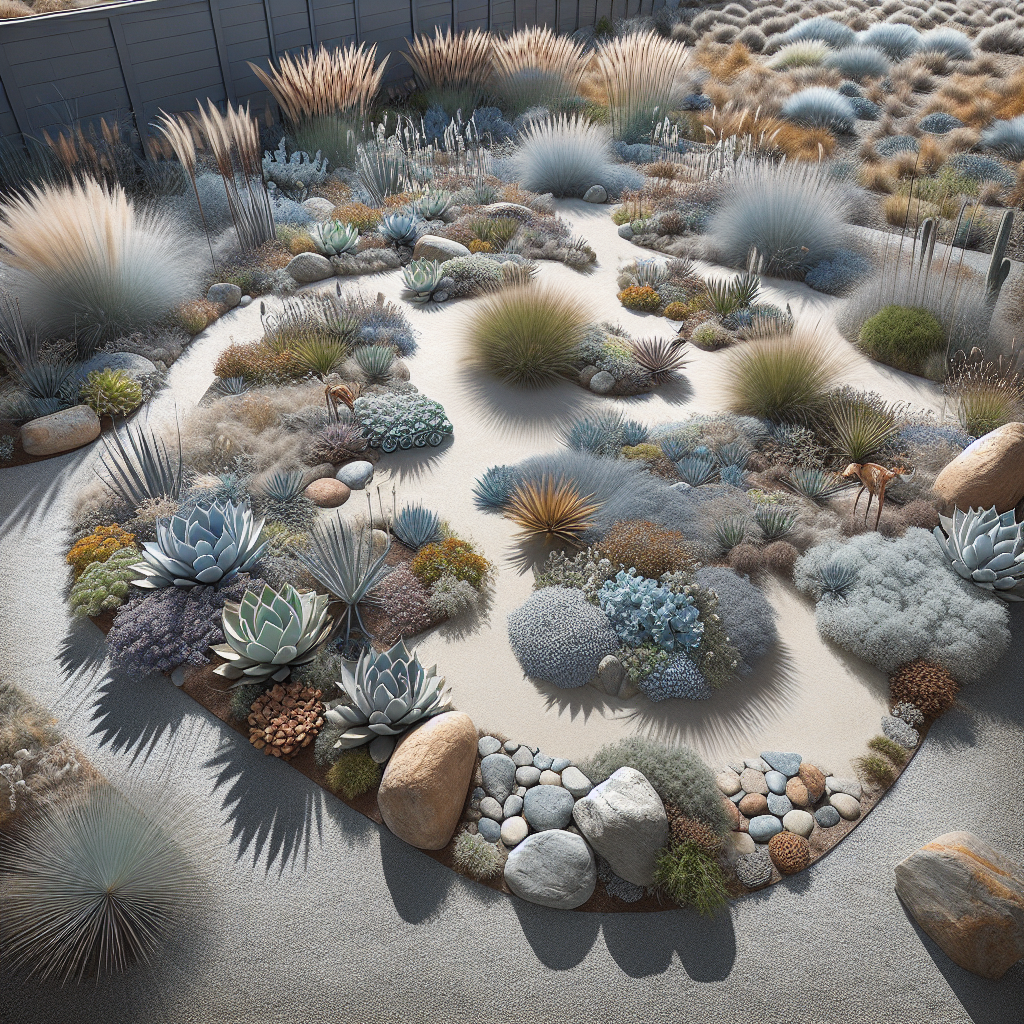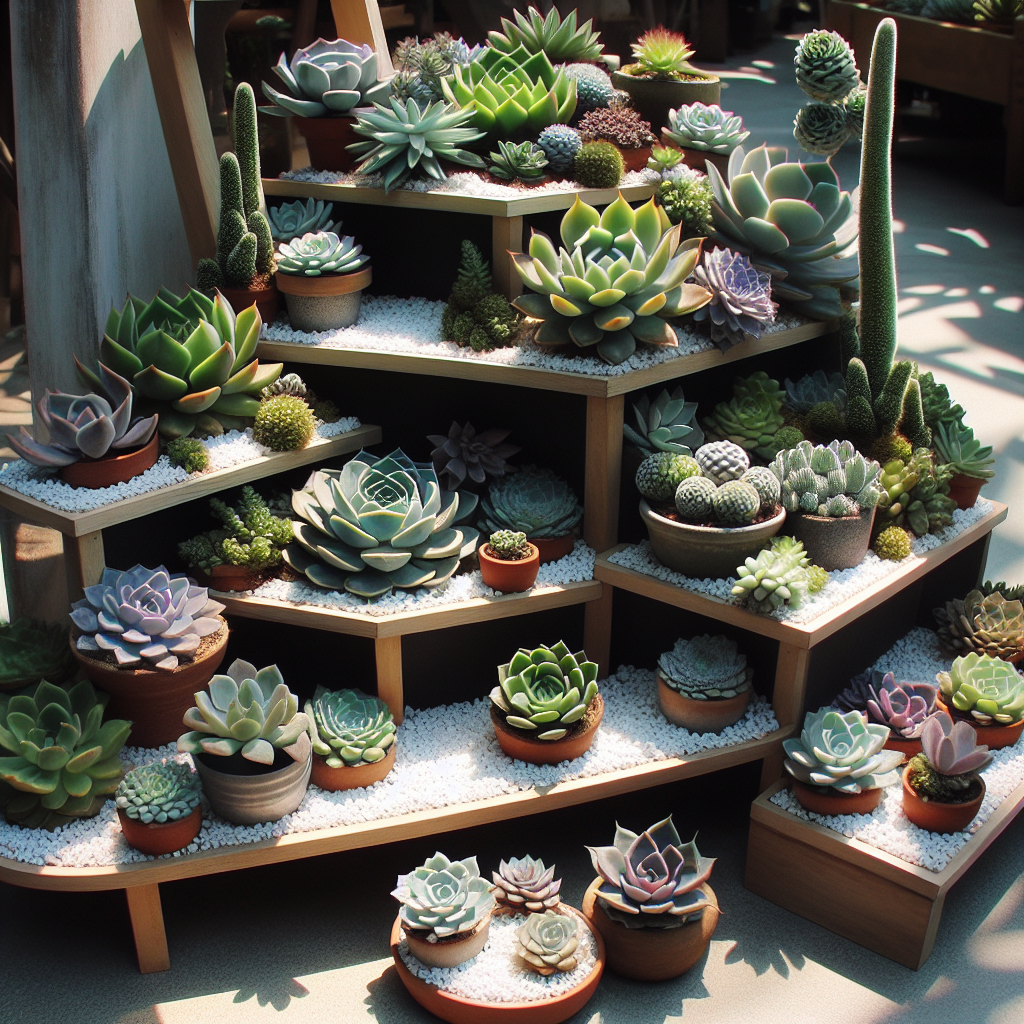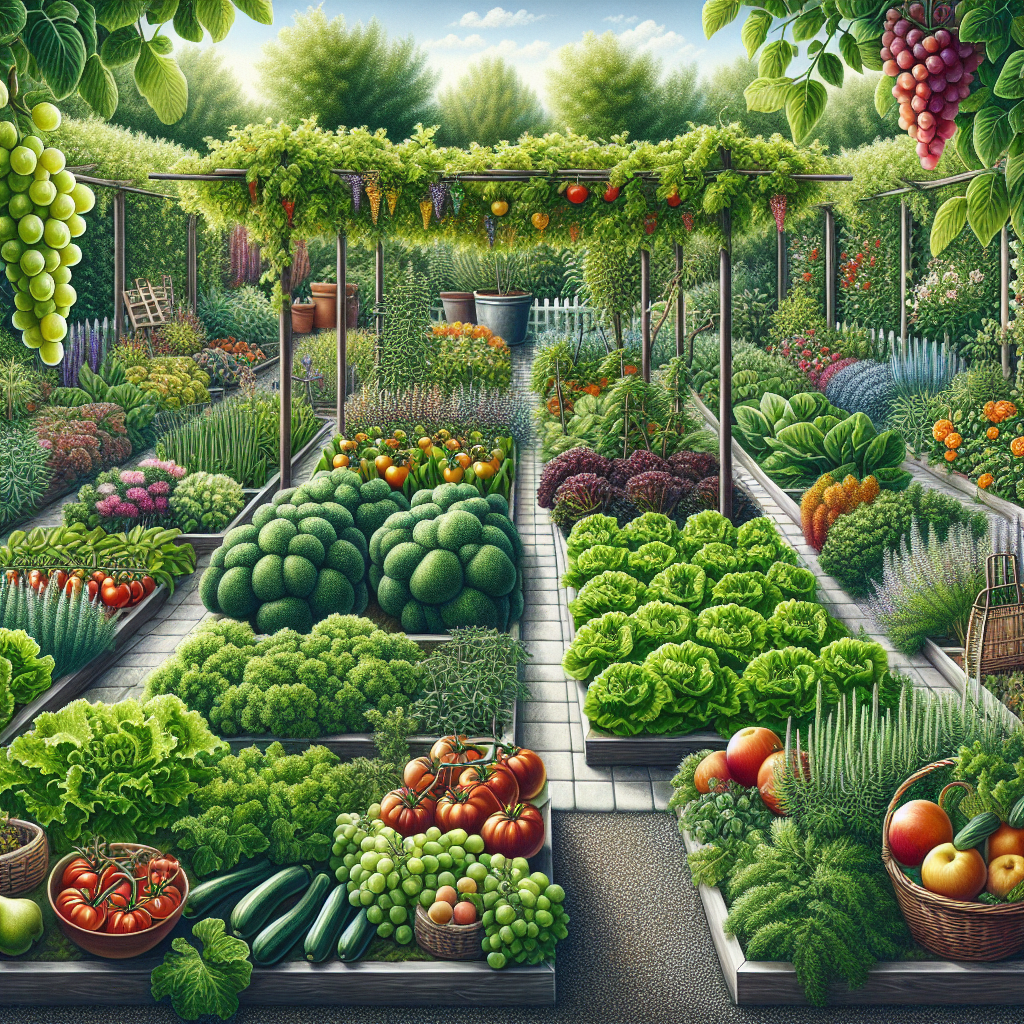Drought-Tolerant Xeriscape Garden for Water Conservation
Creating a beautiful and sustainable garden doesn’t have to be a daunting task. With the right knowledge and a little bit of effort, you can design and build a drought-tolerant xeriscape garden that not only conserves water but also enhances the beauty of your outdoor space. In this comprehensive guide, we will take you through the step-by-step process of creating your own xeriscape garden, from planning and design to plant selection and maintenance. So let’s get started and transform your garden into a water-wise oasis!
Step 1: Assess Your Garden
Before diving into the design process, it’s important to assess your garden and understand its unique characteristics. Take note of the following:
- The amount of sunlight your garden receives throughout the day
- The soil type and drainage conditions
- The existing plants and their water requirements
- The microclimates within your garden (e.g., shady areas, windy spots)
By understanding these factors, you can make informed decisions when selecting plants and designing your xeriscape garden.
Step 2: Plan and Design
Now that you have assessed your garden, it’s time to plan and design your xeriscape garden. Follow these steps:
- Define your goals: Determine what you want to achieve with your xeriscape garden. Are you looking to reduce water usage, attract pollinators, or create a low-maintenance landscape?
- Create a layout: Sketch out a rough layout of your garden, considering the different zones and areas you want to incorporate.
- Choose your plants: Research and select drought-tolerant plants that are suitable for your garden’s conditions. Consider their water needs, growth habits, and aesthetic appeal.
- Consider hardscaping: Integrate hardscape elements such as pathways, patios, or rock features to add visual interest and functionality to your garden.
- Plan for irrigation: Determine the most efficient irrigation system for your garden, such as drip irrigation or a rainwater harvesting system.
Remember to consider the overall aesthetics and functionality of your garden while designing. Aim for a harmonious balance between plants, hardscape elements, and open spaces.
Step 3: Prepare the Soil
Healthy soil is the foundation of any successful garden. Follow these steps to prepare your soil:
- Remove weeds and debris: Clear the area of any weeds, rocks, or other debris that may hinder plant growth.
- Test the soil: Conduct a soil test to determine its pH level and nutrient content. This will help you make any necessary amendments.
- Improve soil structure: If your soil is compacted, add organic matter such as compost or well-rotted manure to improve its structure and drainage.
- Amend the soil: Based on the soil test results, add any necessary amendments such as lime to adjust the pH or specific nutrients to enhance plant growth.
By preparing the soil properly, you provide a healthy environment for your plants to thrive and establish strong root systems.
Step 4: Plant Selection and Placement
Choosing the right plants and placing them strategically is crucial for a successful xeriscape garden. Follow these guidelines:
- Select drought-tolerant plants: Look for plants that have adapted to arid conditions and require minimal watering once established. Some popular choices include succulents, ornamental grasses, and Mediterranean herbs.
- Consider plant height and spread: Arrange your plants based on their mature size, ensuring that taller plants don’t shade out smaller ones.
- Create plant groupings: Group plants with similar water and sunlight requirements together to optimize irrigation and create visual impact.
- Use mulch: Apply a layer of organic mulch around your plants to conserve moisture, suppress weeds, and regulate soil temperature.
Remember to leave enough space between plants for air circulation and future growth. This will prevent overcrowding and competition for resources.
Step 5: Irrigation and Watering Techniques
Efficient irrigation is key to water conservation in a xeriscape garden. Follow these tips:
- Install a drip irrigation system: Drip irrigation delivers water directly to the plant’s root zone, minimizing evaporation and water waste.
- Water deeply and infrequently: Instead of frequent shallow watering, give your plants a deep soak once or twice a week to encourage deep root growth.
- Water in the early morning: Watering early in the morning allows plants to absorb moisture before the heat of the day, reducing evaporation.
- Monitor soil moisture: Use a moisture meter or simply dig a small hole to check the soil moisture level before watering. Avoid overwatering.
By implementing these techniques, you can minimize water usage while ensuring your plants receive the necessary moisture to thrive.
Step 6: Maintenance and Care
Maintaining a xeriscape garden is relatively low-maintenance, but it still requires some care. Follow these guidelines:
- Weed regularly: Remove weeds as soon as they appear to prevent competition for resources.
- Prune and trim: Prune your plants as needed to maintain their shape and remove any dead or diseased branches.
- Fertilize sparingly: Use slow-release organic fertilizers in moderation, as excessive fertilization can lead to excessive growth and increased water needs.
- Monitor for pests and diseases: Regularly inspect your plants for signs of pests or diseases and take appropriate action if necessary.
Additionally, periodically check your irrigation system for leaks or malfunctions and adjust watering schedules based on seasonal changes and plant requirements.
Step 7: Enjoy Your Xeriscape Garden
Now that you have completed all the necessary steps, it’s time to sit back, relax, and enjoy the beauty and benefits of your xeriscape garden. Not only will you save water and reduce maintenance, but you will






